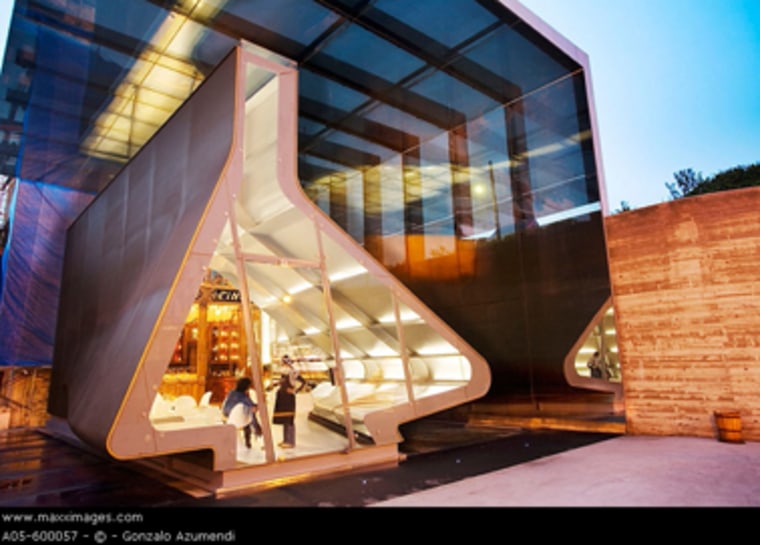When it comes to tasting rooms, what’s outside your glass is often as important as what’s inside it. “The taste of wine is largely contextual,” says Ray Isle, wine editor for Travel + Leisure’s sister publication Food & Wine. “If you’re on your honeymoon, sipping rosé from a paper cup on the French Mediterranean, it will taste fantastic. Later, if you drink an identical rosé from a crystal glass while getting divorced, it will taste like crap.”
This idea may rile purist winemakers, brewers, and distillers, but dazzling tasting rooms—often with views of stunning scenery—are increasingly crucial when it comes to wooing thirsty travelers.
Rather than the old-world wine country of France and Italy, it’s lesser-known regions like Argentina, Chile, Austria, and New Zealand (countries eager to build a reputation), along with the U.S., that are leading the wine-tourism innovations. In these countries, grape-loving travelers can visit an array of light-filled tasting rooms with unparalleled views and award-winning architecture—an experience to appeal to all the senses.
France and Italy, meanwhile, are a little behind the times. In regions like Bordeaux, wines are sold by middlemen, leaving most château owners with little incentive to build remarkable tasting rooms for consumers they’re never likely to meet. But the situation is starting to change. France finally has a national wine tourism association, and according to Isle, progressive French wineries are looking to new-world producers like Opus One, whose state-of-the-art tasting room is a big draw for Napa Valley travelers, for inspiration.
And not every classic wine region is missing the boat. “If you’re into architecture you should immediately go to Rioja in Spain,” Isle says. Architects Frank Gehry, Zaha Hadid, Santiago Calatrava, Richard Rogers and Norman Foster have all designed wineries there in recent years, with some projects costing upward of $30 million. “While Rioja is a perfectly pretty place, it’s not spectacular,” claims Isle. “It doesn’t have craggy peaks and snow-covered mountains. But they’ve made up for that with extraordinary architecture.”
The creation of destination wineries is also turning previously unknown regions into tourism hot spots. “Before the new millennium hardly anyone visited Mendoza,” says Mark Wheeler, Abercrombie & Kent’s regional managing director for South America. “Argentina saw a massive influx of wine tourism after the 2001 currency crash, and many winegrowers went from being simply agricultural producers to seeing tourism as an integral part of their role.” The result is a region where practically every glass is served with a generous view of the Andes.
These tasting rooms, the world’s most scenic and inviting, provide an excellent opportunity to take in an area’s natural beauty—while sampling the best bounty of the land. Cheers!
